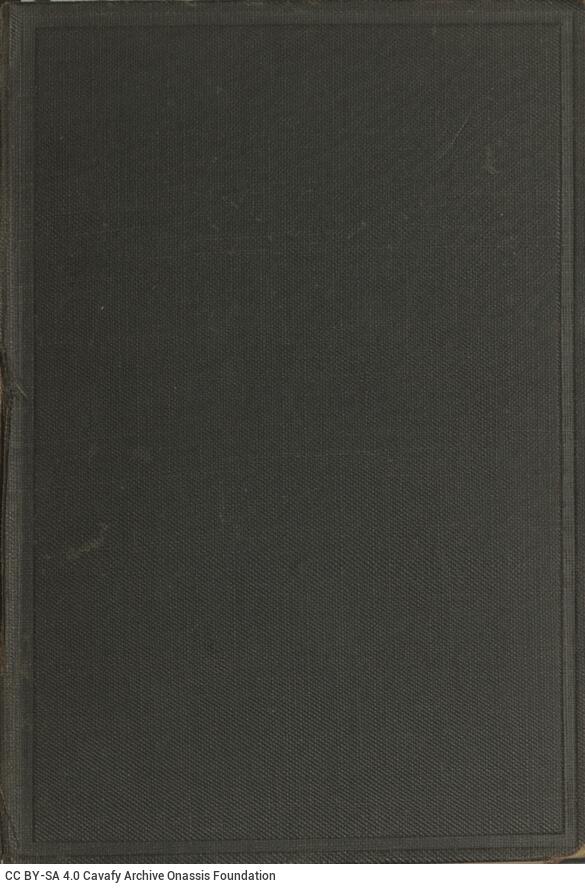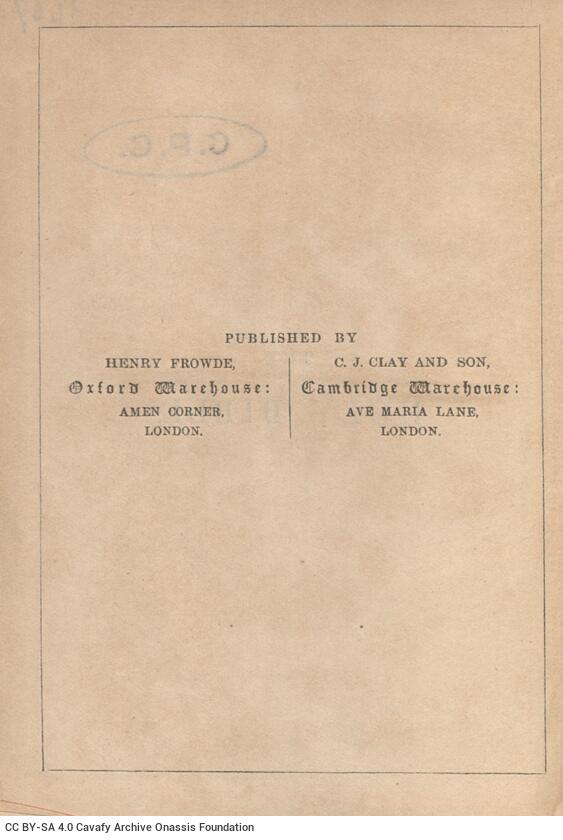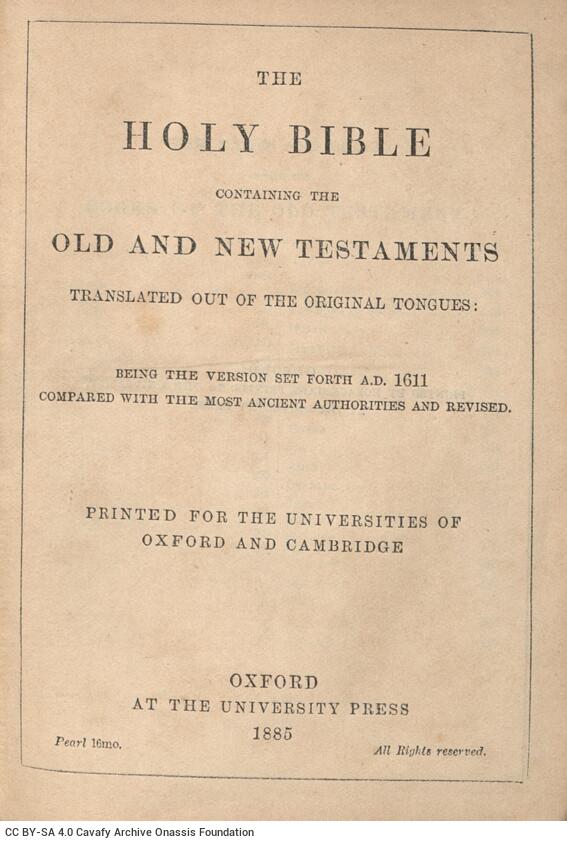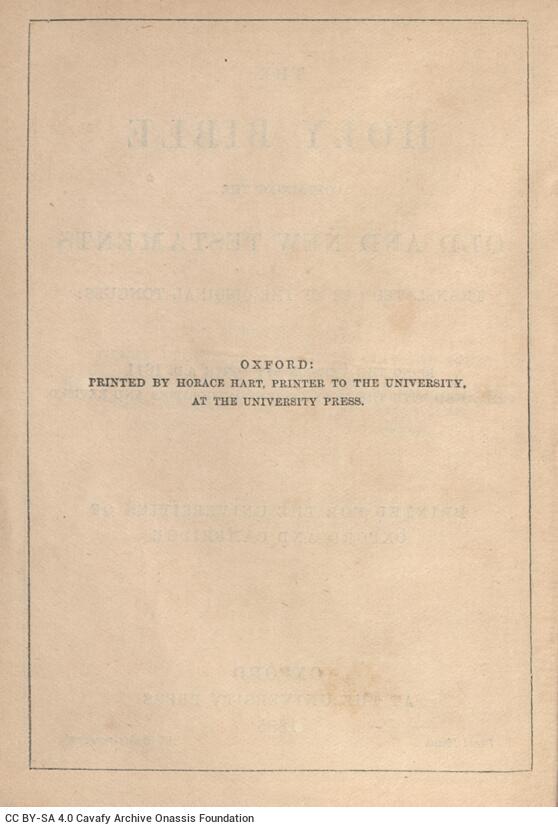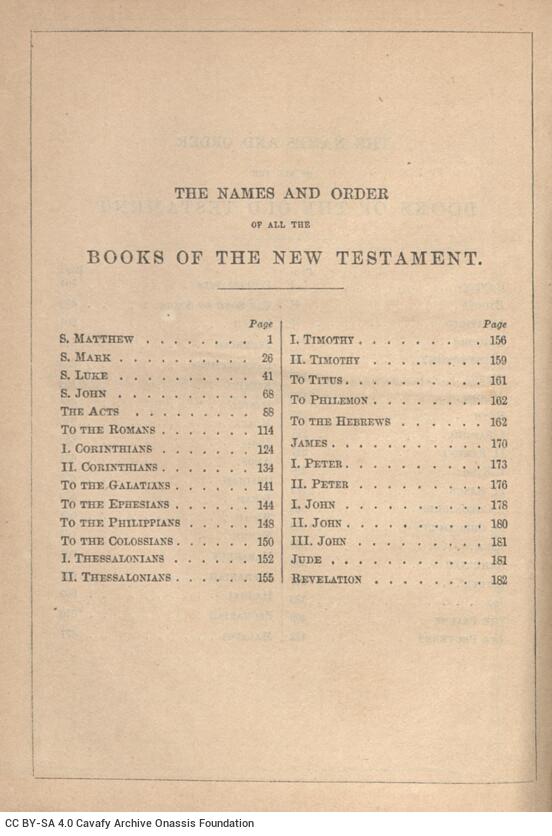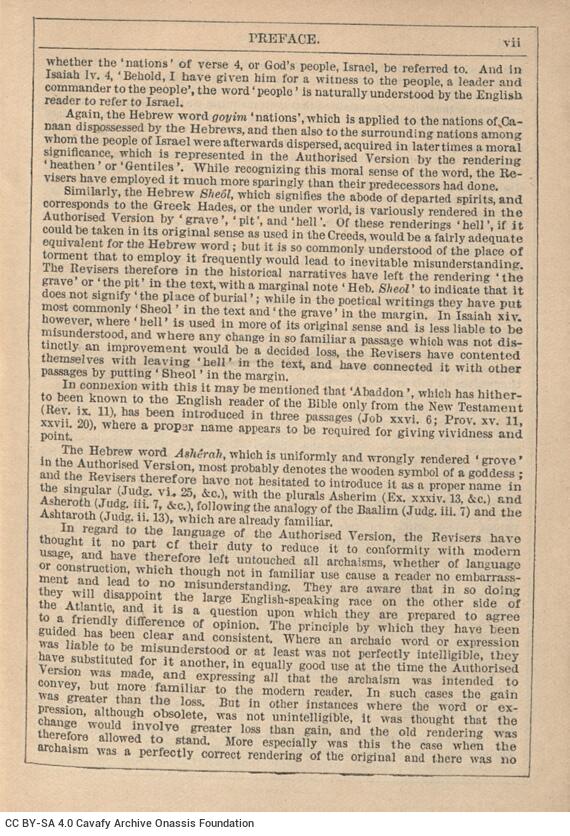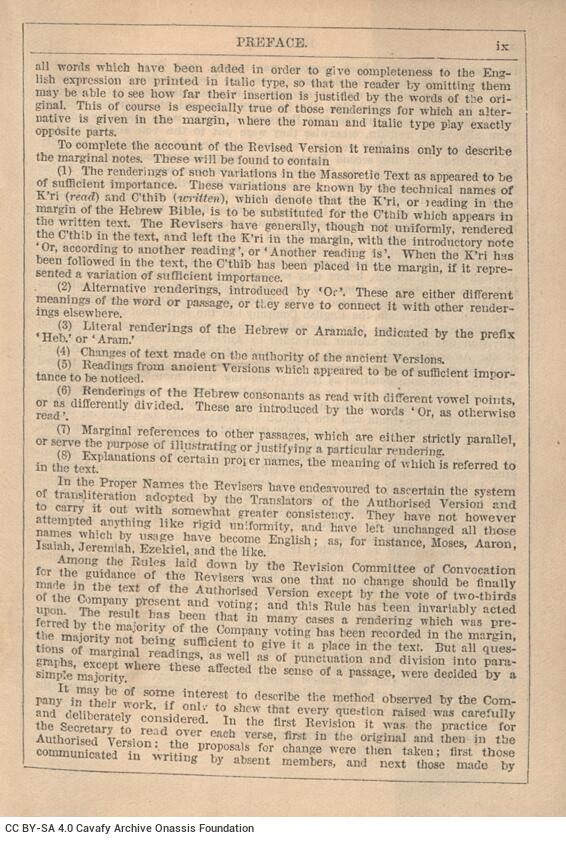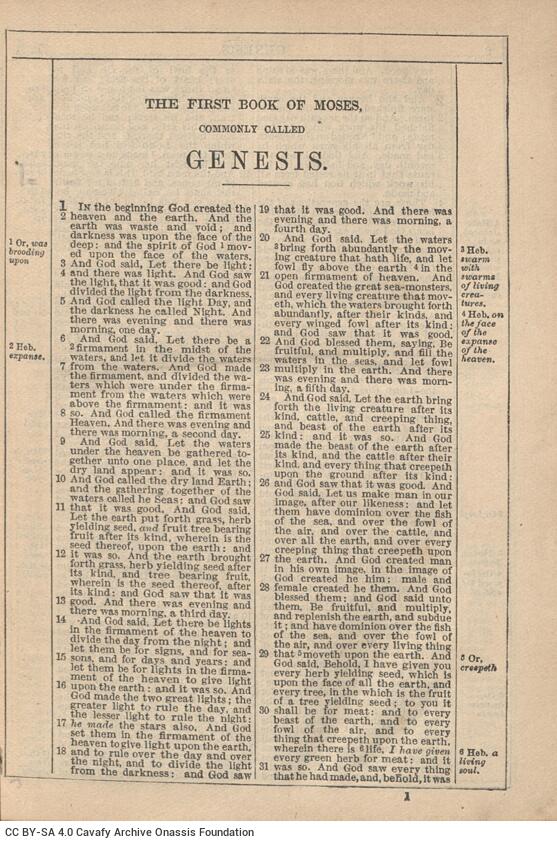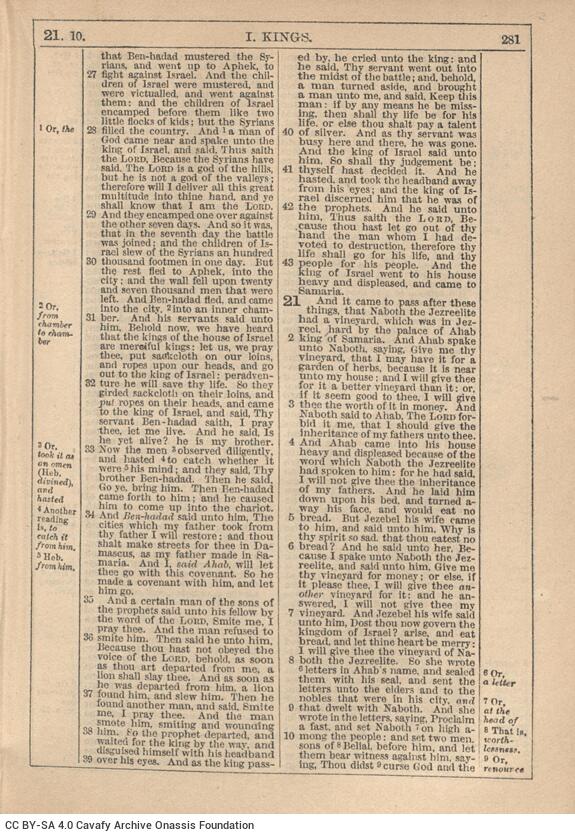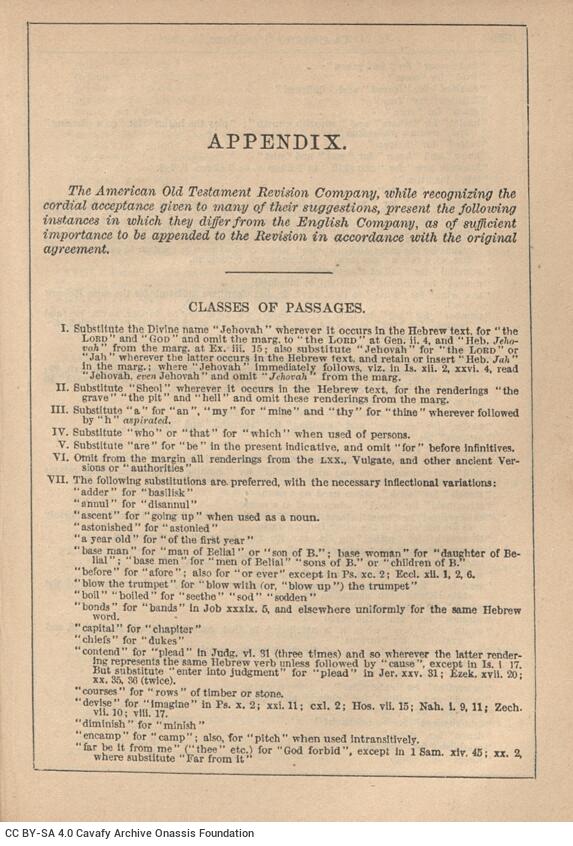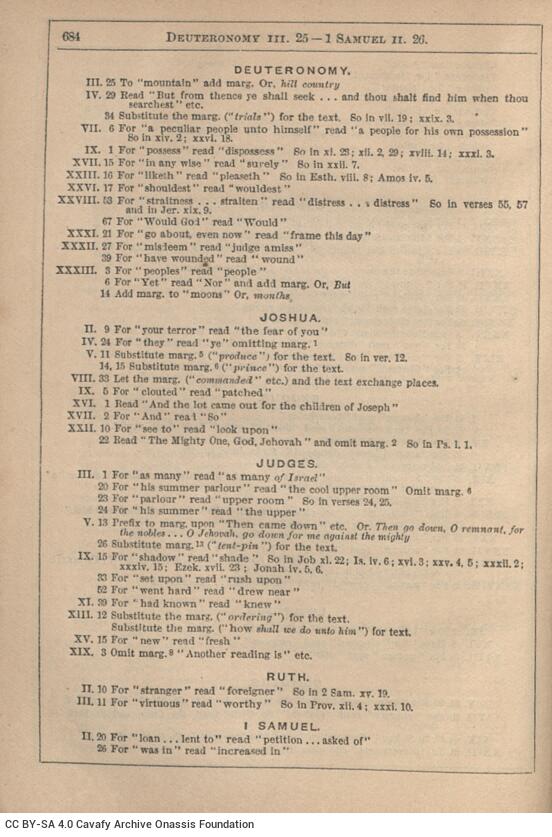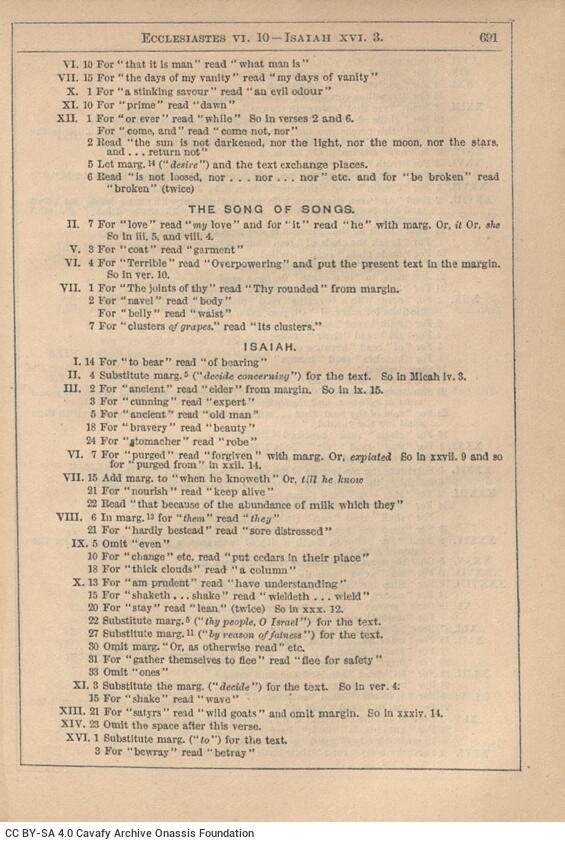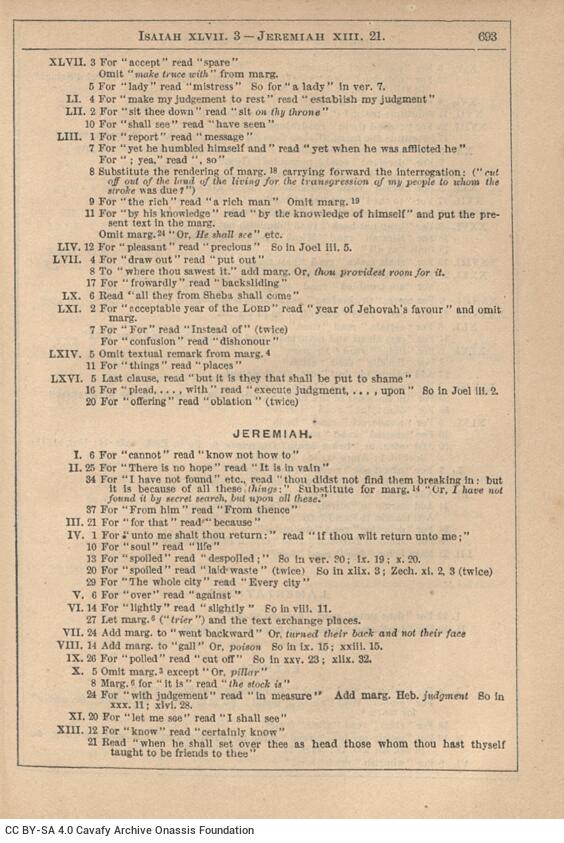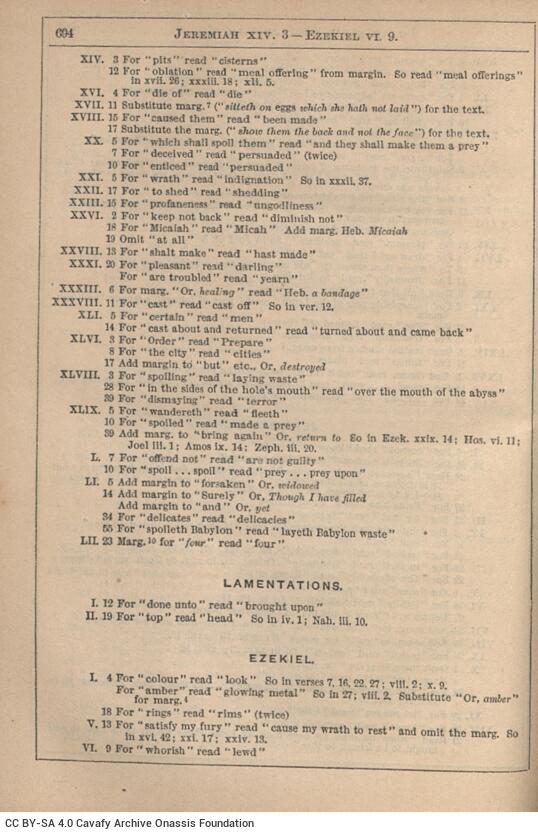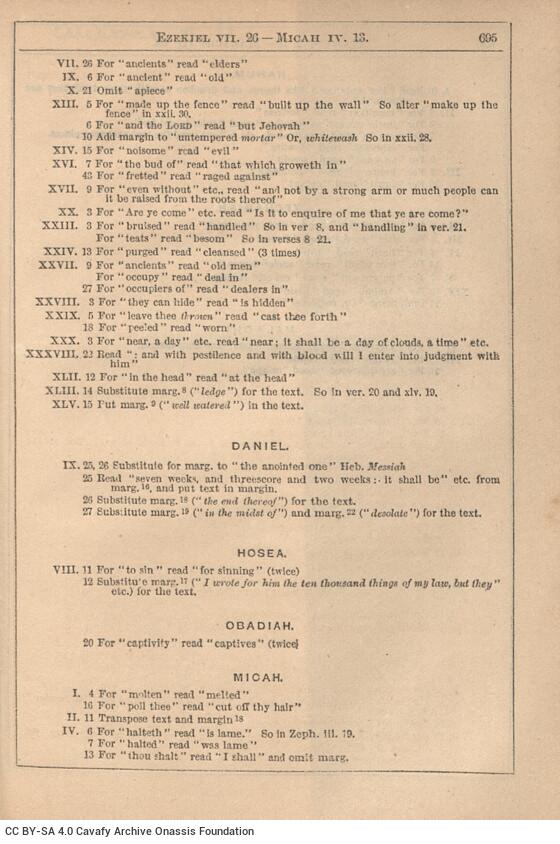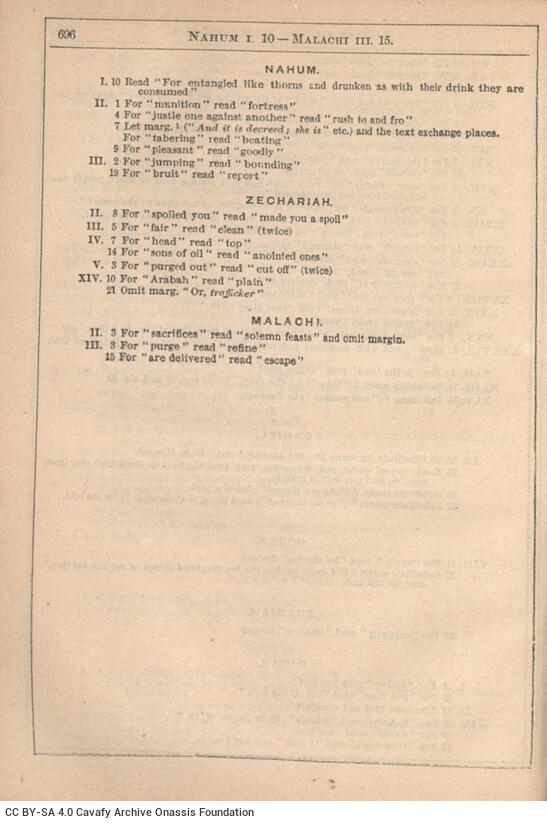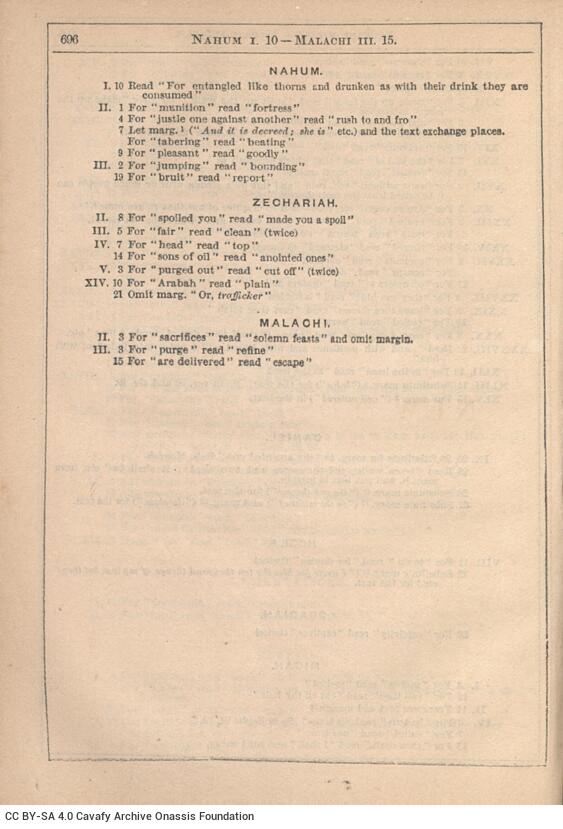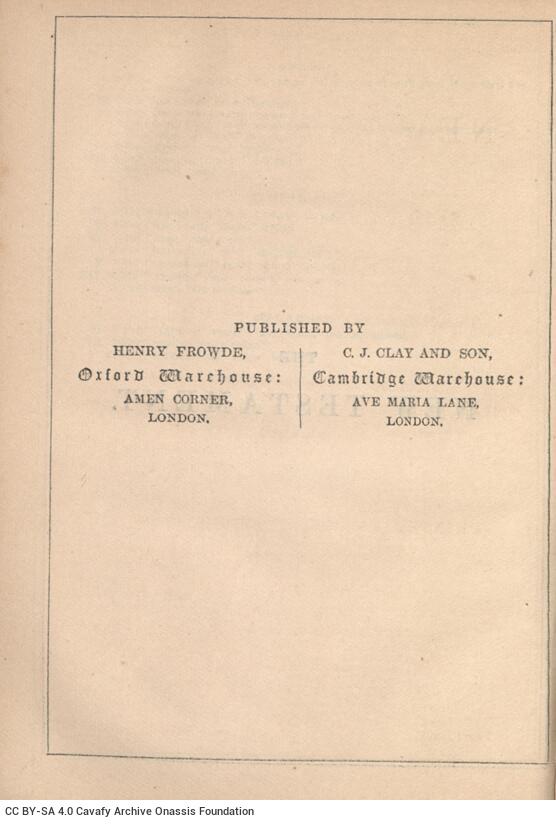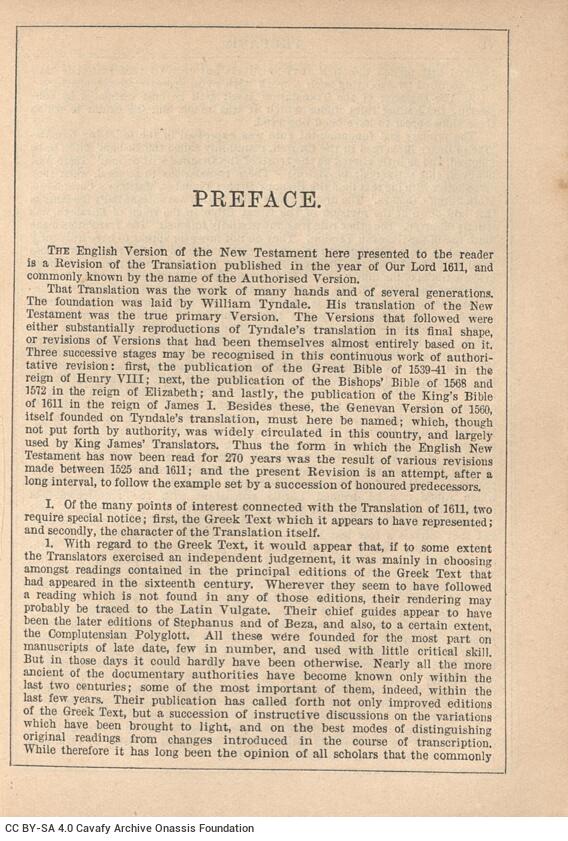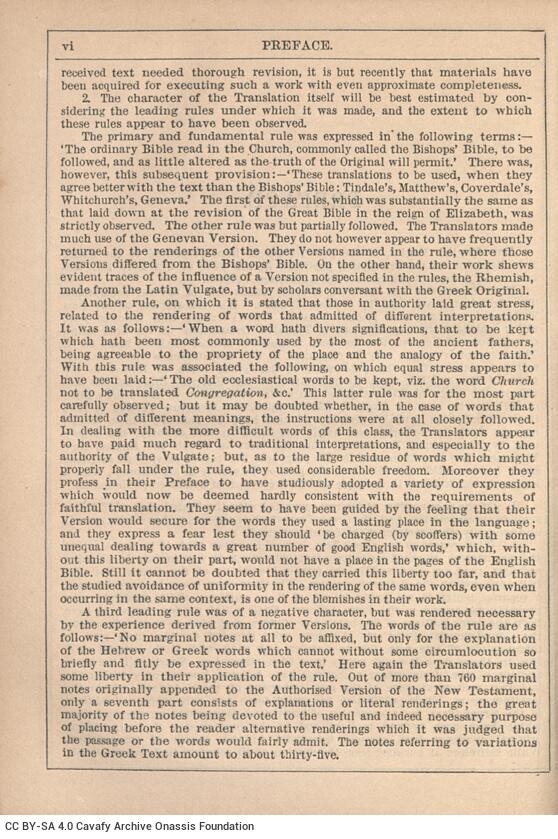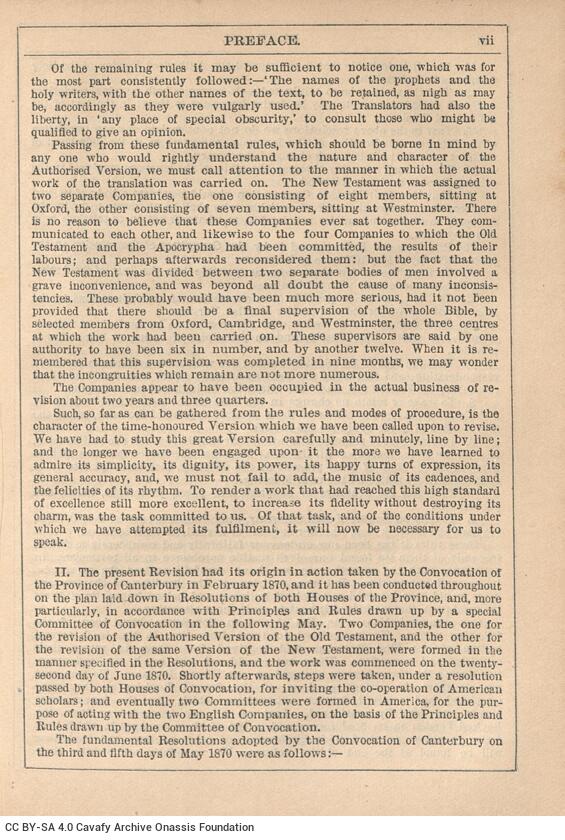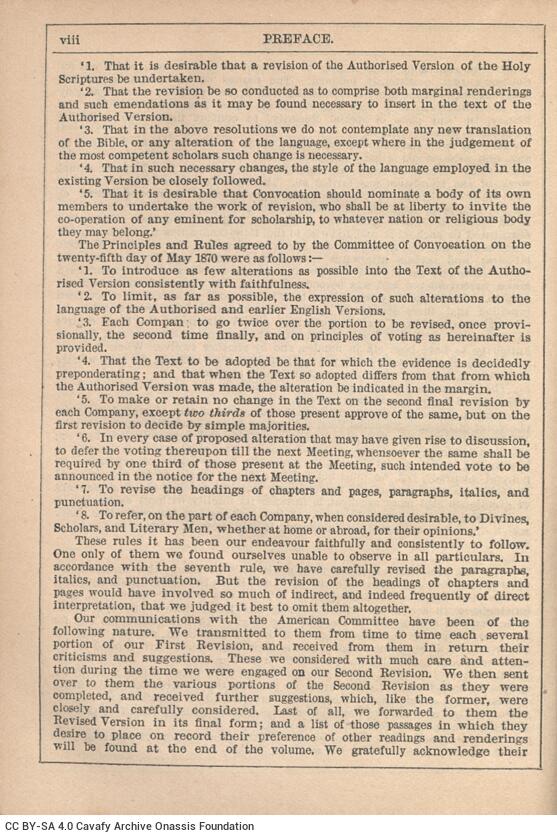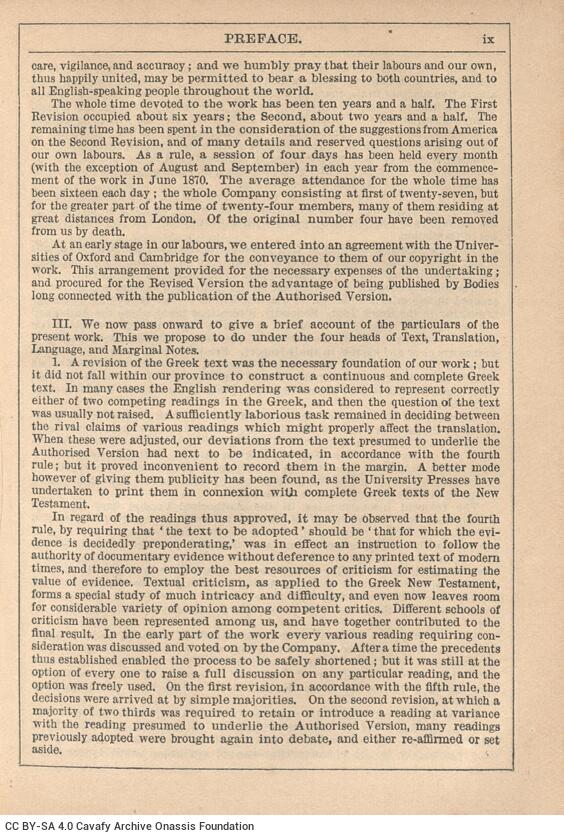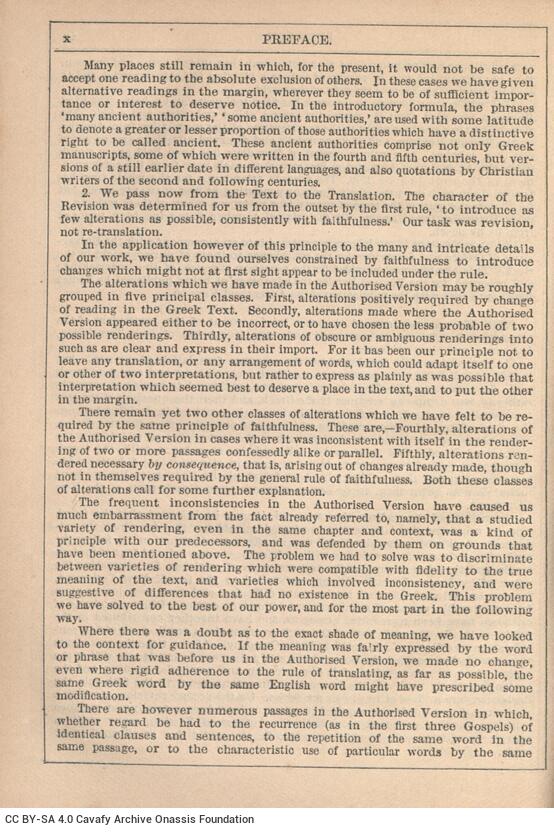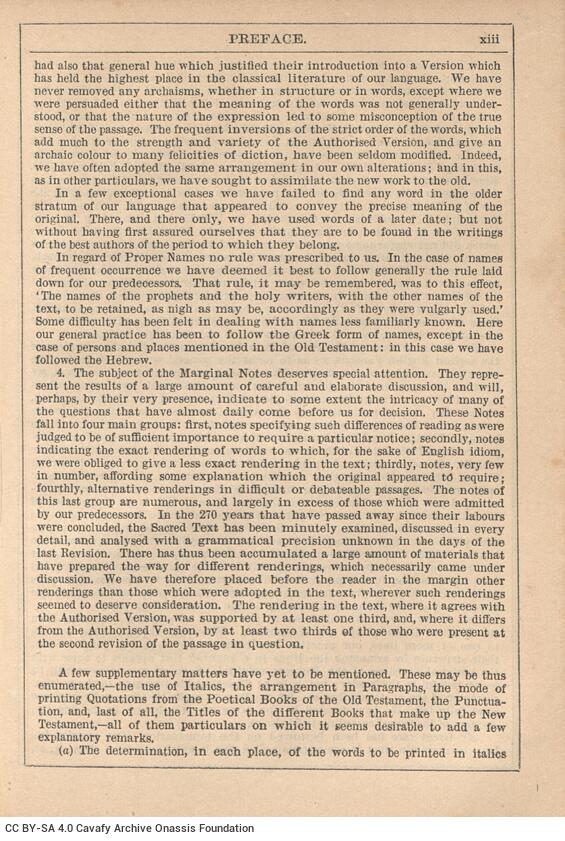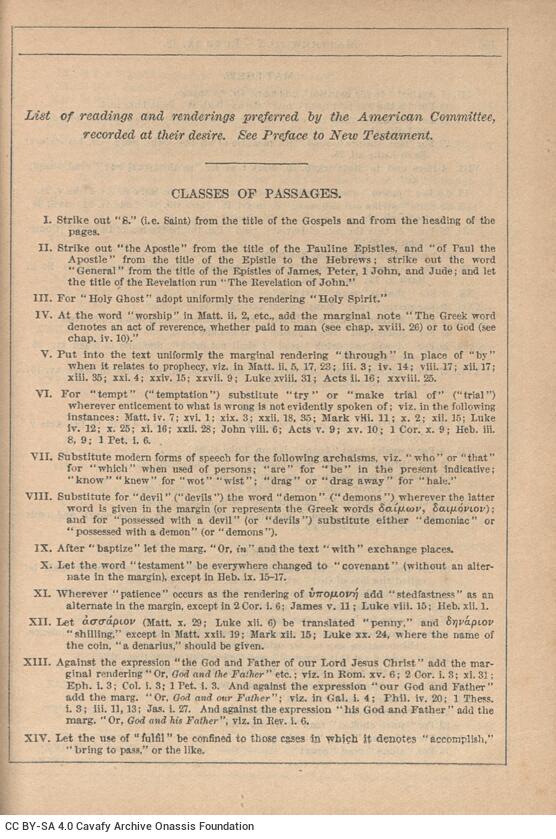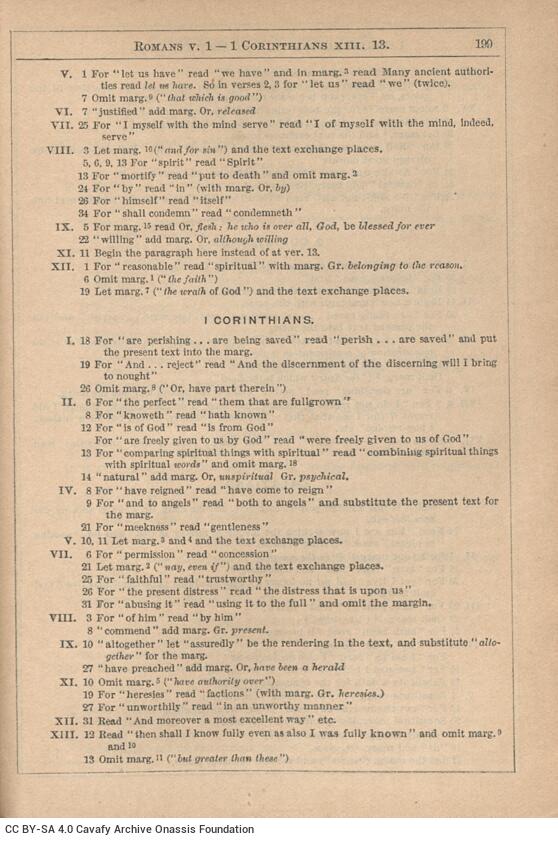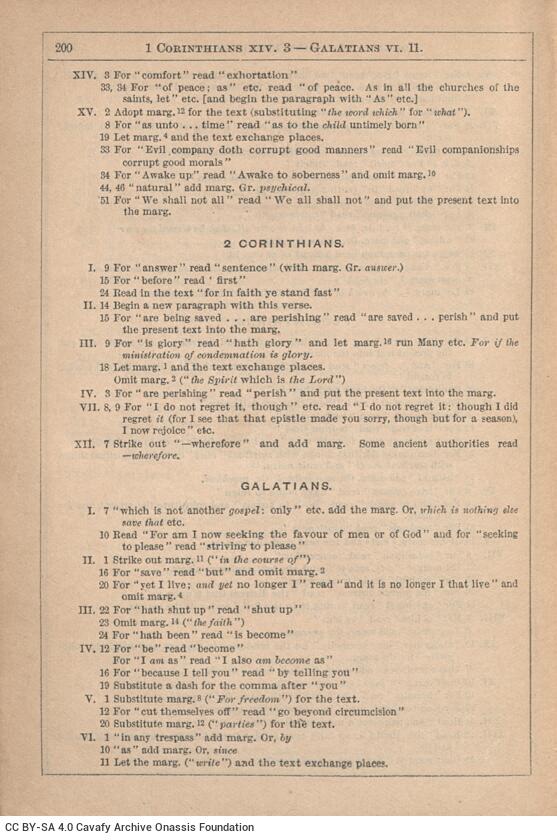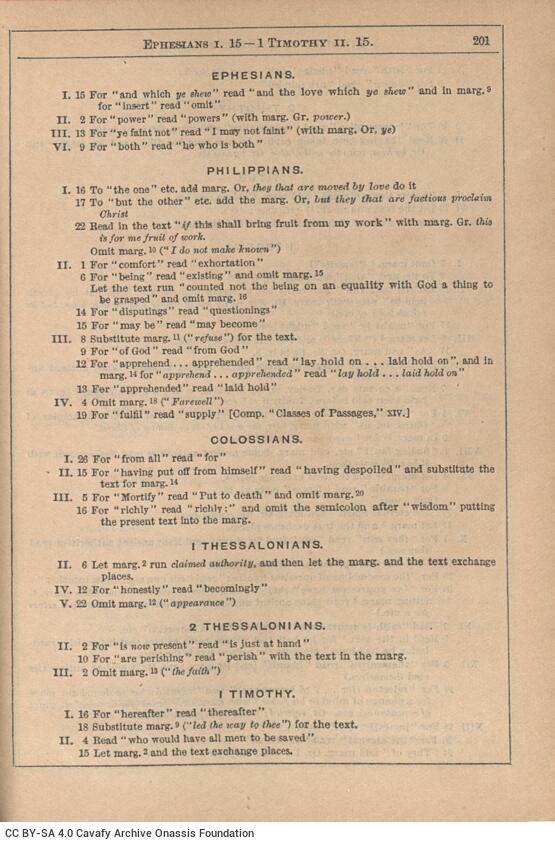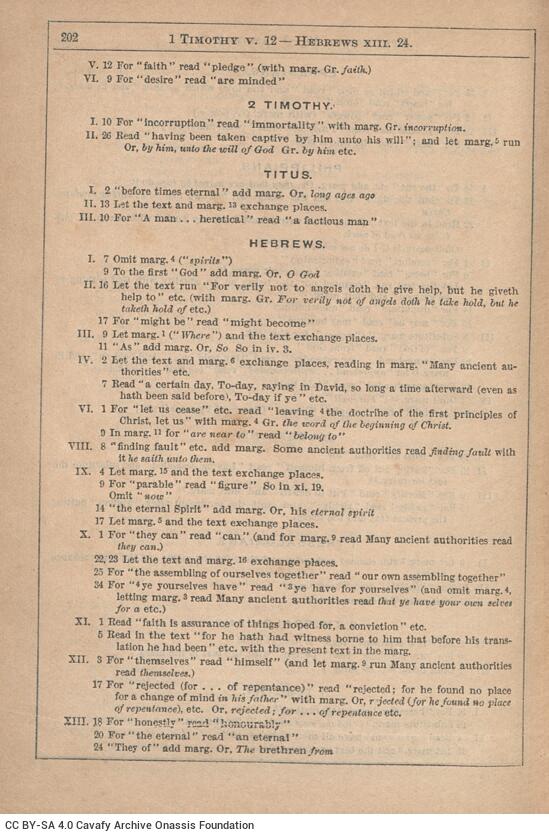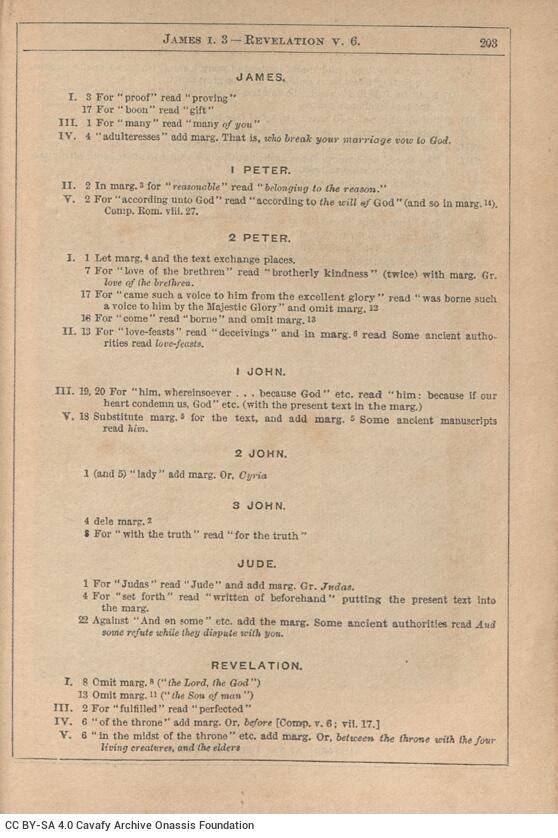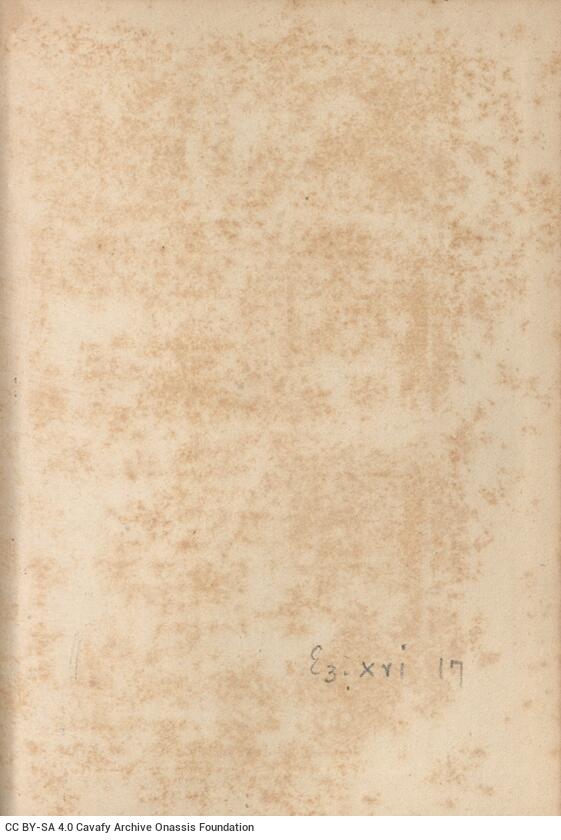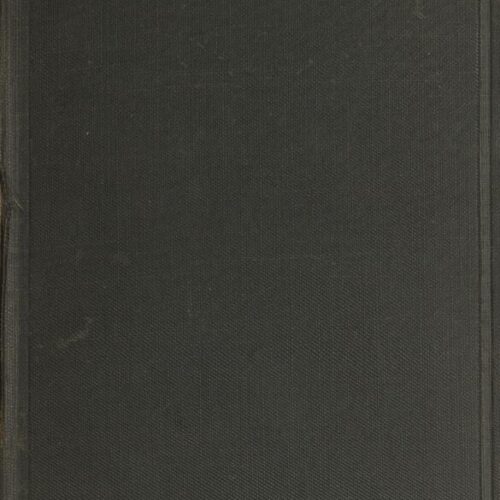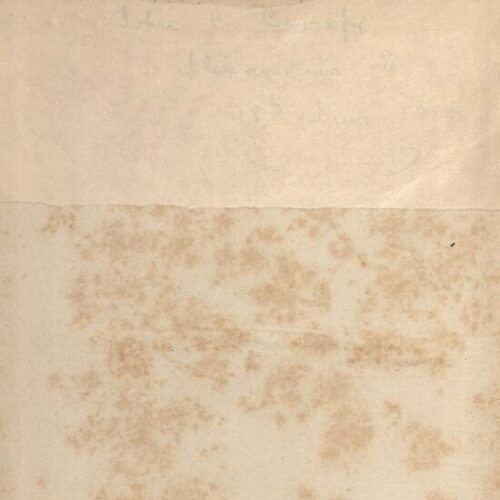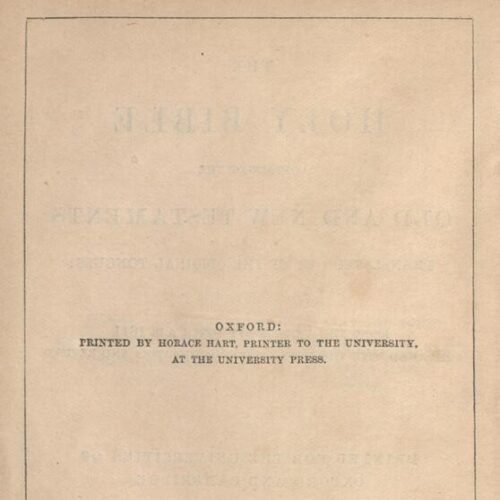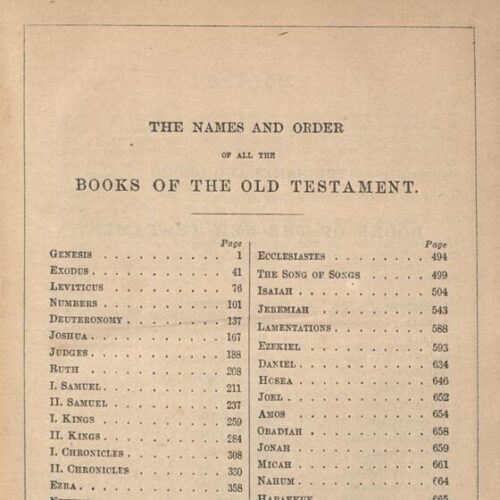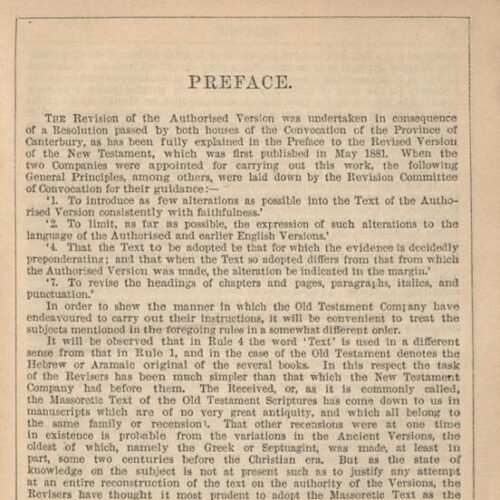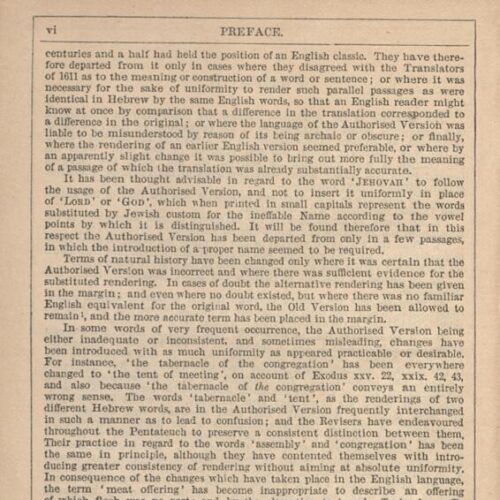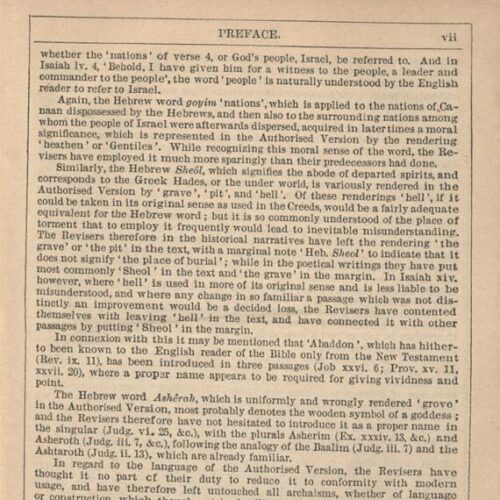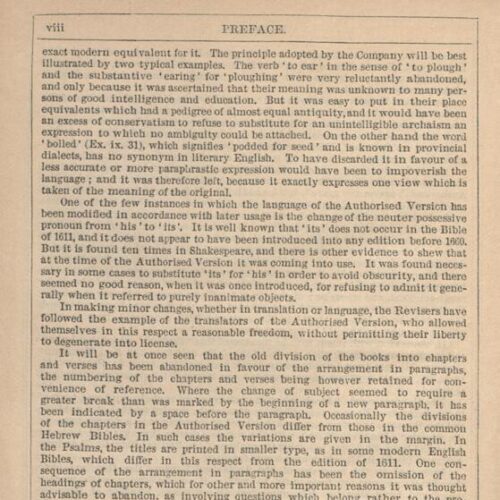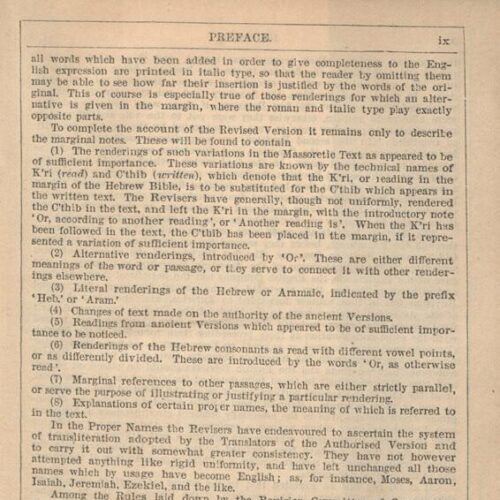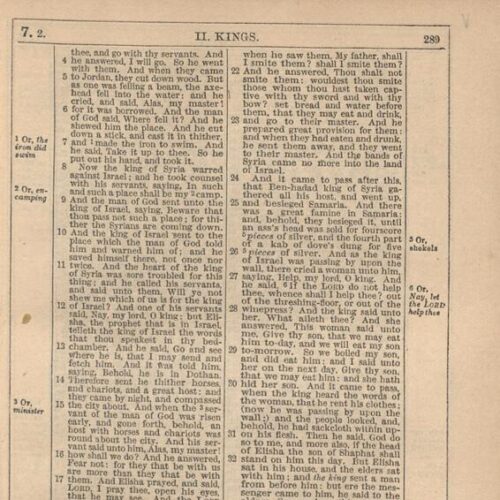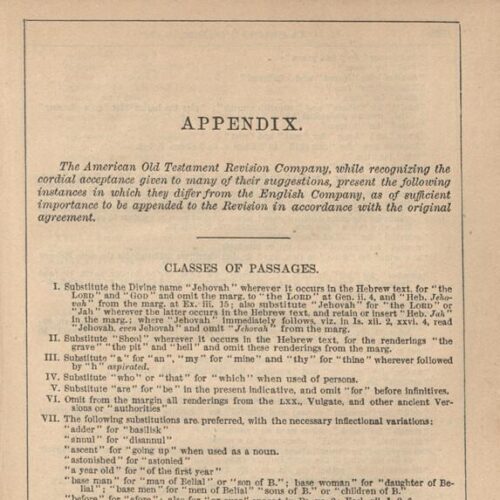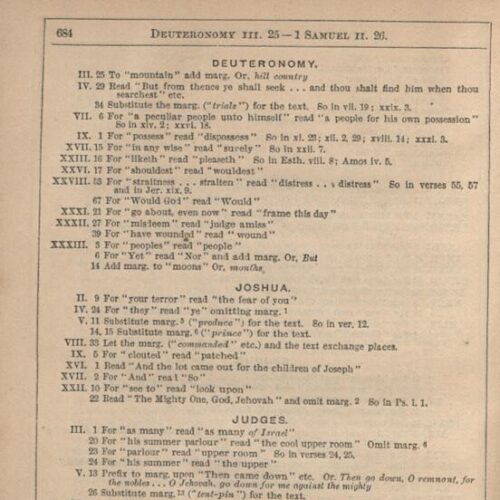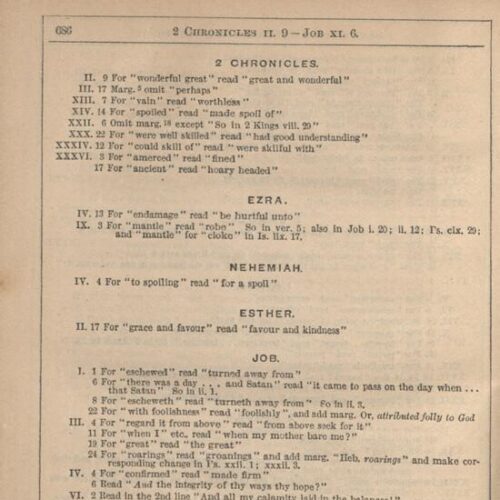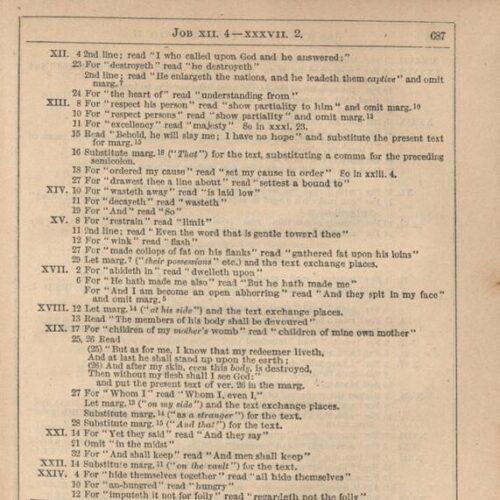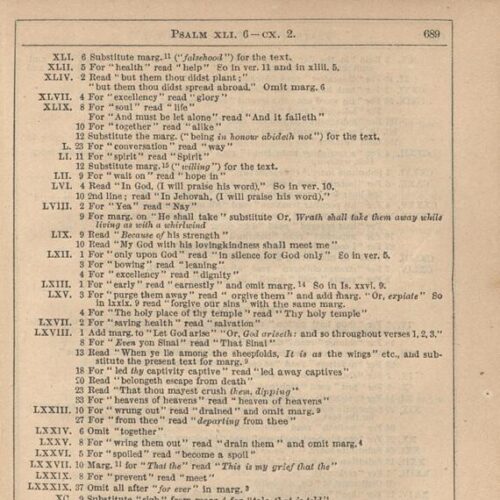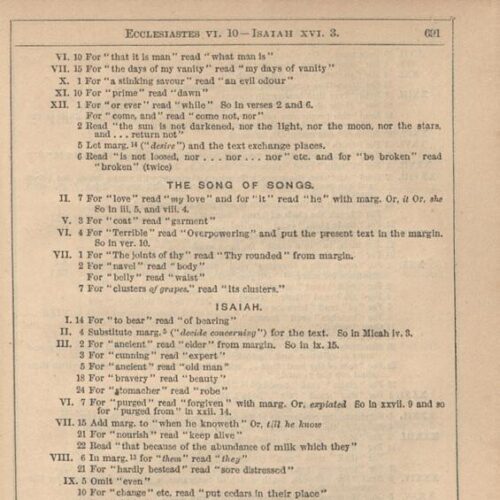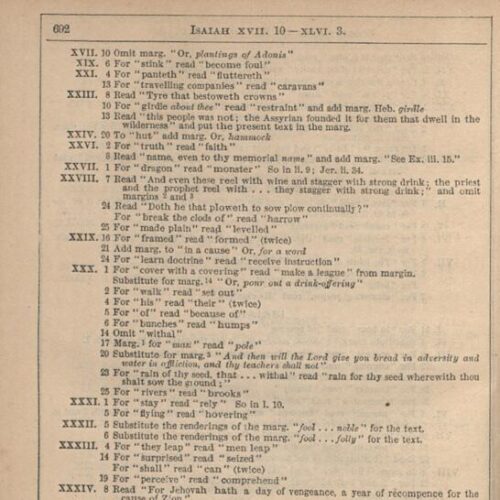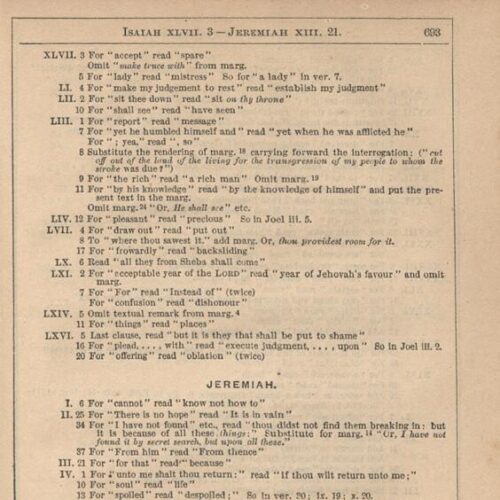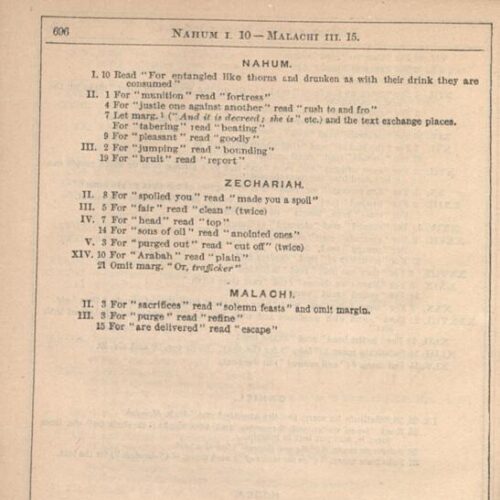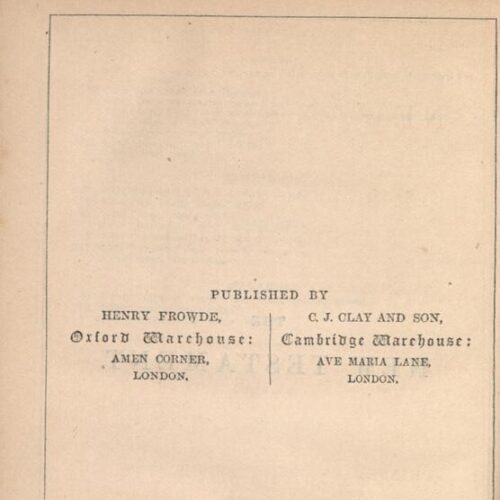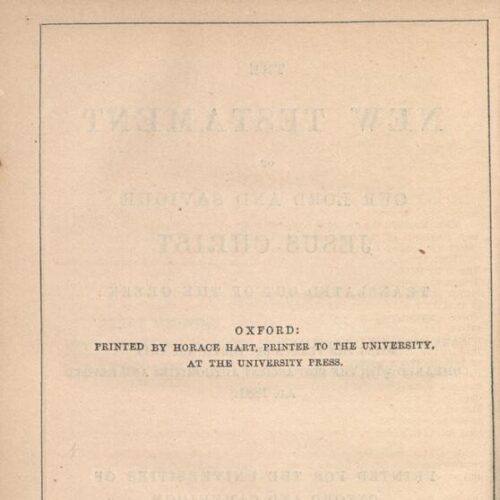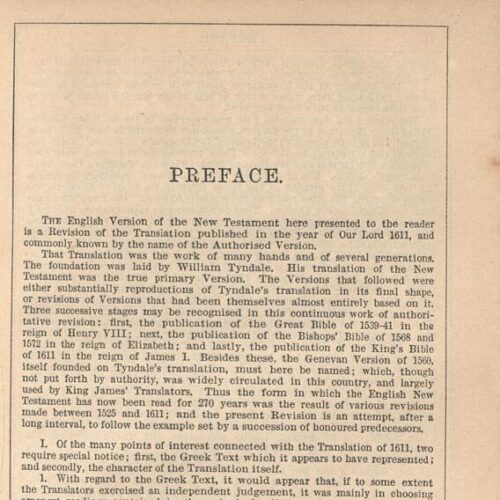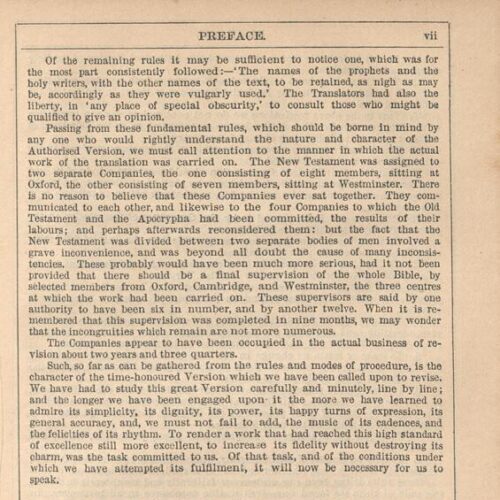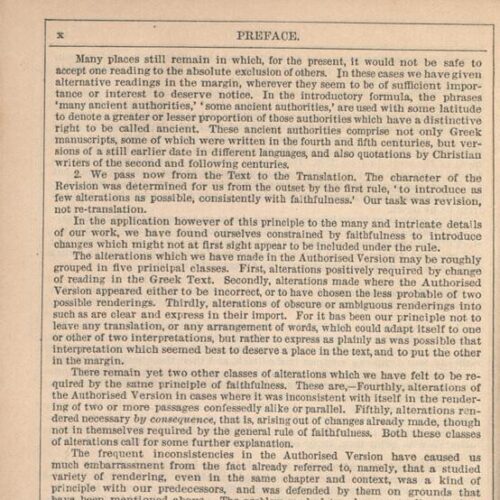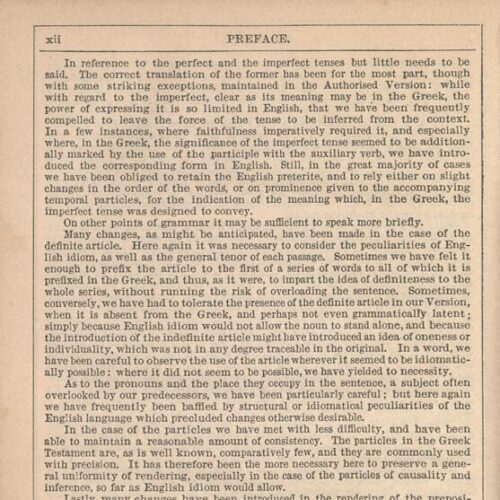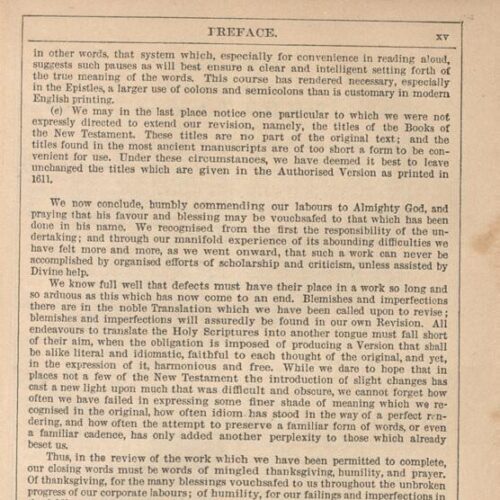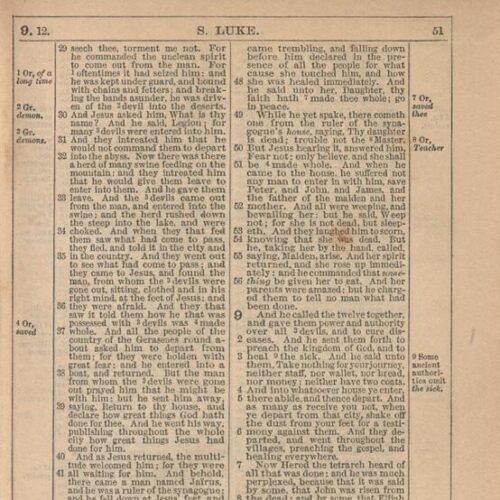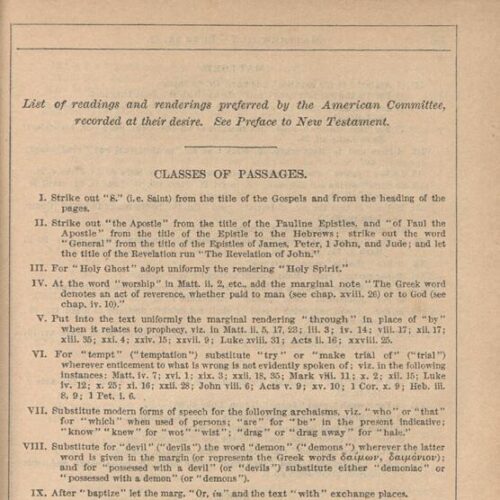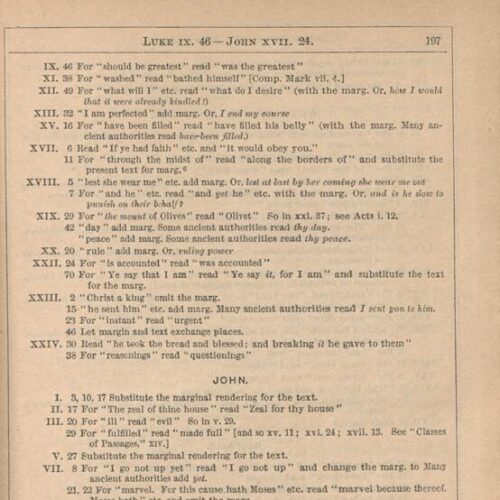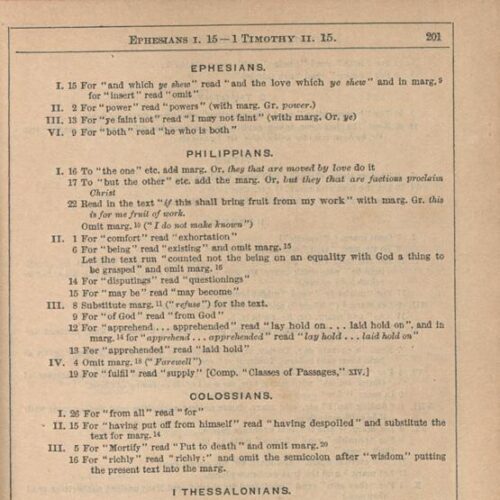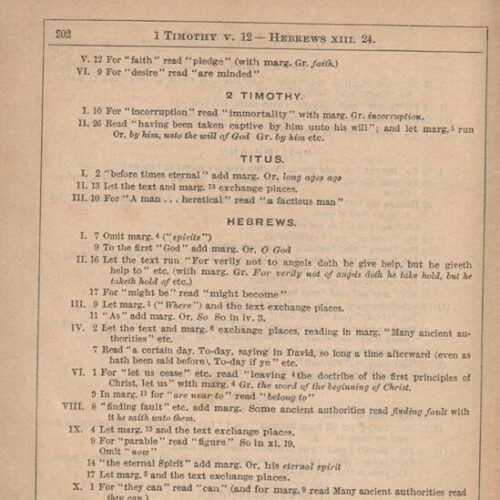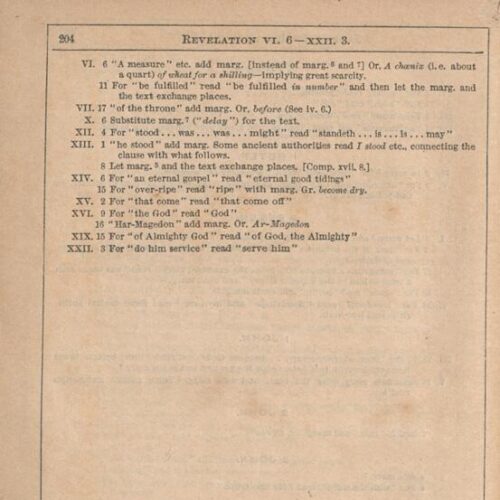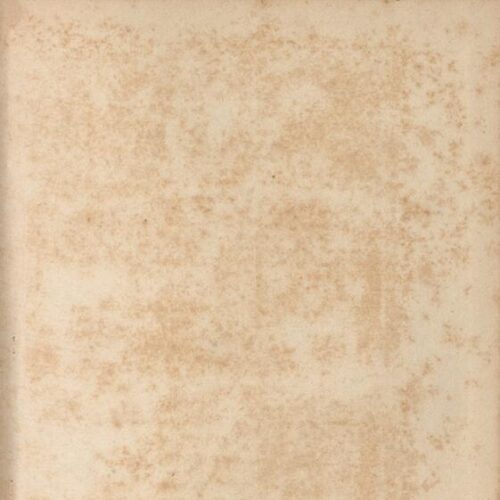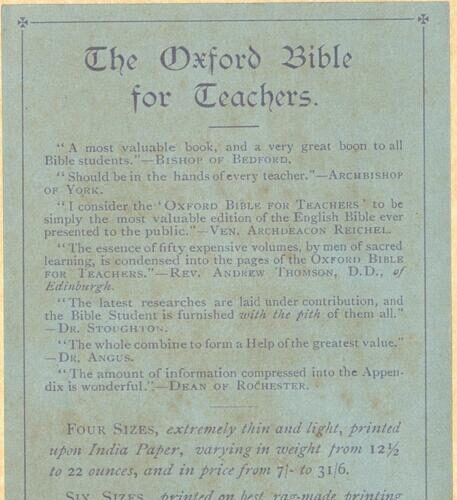The Holy Bible Containing the Old and New Testaments. Translated out of the original tongues: being the version set forth A.D. 1611 compared with the most ancient authorities and revised. Oxford at the University Press, 1885
underlining
underlining
green fonts
yellow fonts
red fonts
DIGITAL OBJECT DESCRIPTION
- CAVAFY LIBRARY
English
10 x 14.5 cm; 4 s.p. + Χ p. + 696 p. + XV p. + 204 p. + 2 s.p. + 1 insert, l. 1 John Cavafy’s handwritten signature on verso, accompanied by a note of the imprint with pencil, l. 2 half-title page with bookplate CPC, handwritten note of number “1664” with pencil on recto and information about the edition on verso, p. [Ι] title page, p. [ΙΙ] printed note with information about the edition, p. [ΙΙΙ] printed note with the titles and the arrangement of the books in the Old Testament, p. [IV] printed note with the titles and the arrangement of the books in the New Testament, p. [V]-X “Preface”, pencil marks on p. [1], 281, 289, p. [681]-696 “Appendix”, half-title page of the New Testament continues on p. [Ι], p. [ΙΙ] information about the edition, p. [ΙΙΙ] title page of the New Testament, p. [IV] information about the edition, p. [V]-XV “Preface”, p. 51 mark, p. [195]-204 “Appendix” and p. [205] handwritten note with pencil. Pamphlet of the Oxford University Press Warehouse inserted between p. 204-[205].
CPC
Jοhn C. Cavafy
This is the *Old* and the *New Testament* bound together in a single edition. The edition of the Old Testament contains 694 p. and the edition of the New Testament contains 204 p. There are pages between editions with Roman numerals, including endsheets at the front and prefatory parts.
On verso of l. 1 a paper is attached on John Cavafy’s handwritten note.
ACCESS POINTS
Metadata in machine-readable format
C.P. CAVAFY LIBRARY:
Sacred texts
Previous book - The Holy Bible containing the Old and New Testaments. Translated out of the original tongues and with the former translations diligently compared and revised by His Majesty’s special command. Appointed to be read in Churches
Next book - The New Testament of our Lord and Saviour Jesus Christ. Translated out of the original Greek and with the former translations diligently compared and revised by His Majesty’s special command. Appointed to be read in Churches
